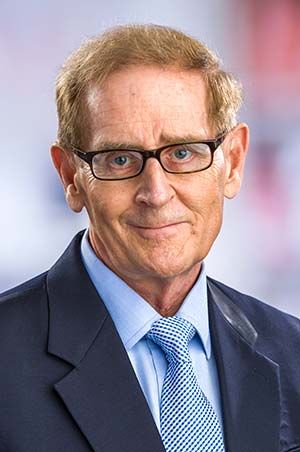- Bone Health
- Immunology
- Hematology
- Respiratory
- Dermatology
- Diabetes
- Gastroenterology
- Neurology
- Oncology
- Ophthalmology
- Rare Disease
- Rheumatology
Gary Lyman, MD, MPH, Explores the Progress With Oncology Biosimilars
Oncology biosimilars are broadly in use for good reason: They're absolutely vital for cost reduction and access, but efforts are needed to promote uptake of these agents, says Gary Lyman, MD, MPH, in this interview.
In a recent interview, Gary Lyman, MD, MPH, an oncologist and hematologist and public health researcher with the Hutchinson Institute for Cancer Outcomes Research, in Seattle, compares the uptake of biosimilars for cancer care and other conditions and provides insight on how uptake could be improved.
The interview was published in segments on AJMC.com, the website of The American Journal of Managed Care®, and The Center for Biosimilars®; descriptions of these segments and links to them are below.
Lyman discusses payer formularies and the profound effect they have on the drugs that providers employ. This also affects the use of biosimilars, he notes.
Lyman says biosimilar uptake in the oncology space is high because of the need for affordable treatment of cancer. Additionally, guidelines from the American Society for Clinical Oncology and the National Comprehensive Cancer Network strongly support the use of biosimilars in oncology.
Further, Lyman explains that filgrastim biosimilars have greater uptake than pegfilgrastim biosimilars probably because filgrastim biosimilars have been around longer and a lot of patients were given filgrastim biosimilars as an alternative to reference pegfilgrastim (Neulasta). Additionally, some patients are treated with less than the FDA-recommended dosing of filgrastim to save money, a strategy that has not been supported by clinical evidence. Lyman believes cost advantages and reimbursement, which may not be available for pegfilgrastim biosimilars, are big reasons why filgrastim biosimilars have seen such wide adoption in oncology.
Health care providers and institutions must be proactive in advocating for biosimilars, he says, advising that payers, providers, and health systems reach out to patients to indicate their perspectives on these agents. He also suggests there be a better alignment between what is encouraged by the clinical community and what payers are willing to cover.
The Pros and Cons of Interchangeability
He discusses interchangeability—the granting of the right to pharmacists to substitute biosimilars without consulting the physician—and the pushback on this issue. There is hesitancy to accept interchangeability of biosimilars, and physicians should have the right to keep a patient on an originator product if it’s working for them and switching could destabilize the patient’s condition, Lyman says. However, “no biosimilar has been removed from the marketplace” for failure to perform like its originator, he notes.
Lyman argues that the size of a health system or practice can affect whether reimbursement measures or incentives will influence biosimilar utilization. He adds that interchangeability designations hold the potential to help companies market their products and encourage wider use of their biosimilars. However, Lyman stresses that if a biosimilar receives an interchangeability designation and can be prescribed in place of a reference product at the pharmacy level, without the need for physician authorization, physicians should still be notified that a switch occurred, if for no other reason than pharmacovigilance.
Will the FTC Be More PBM-Friendly Under a Second Trump Administration?
February 23rd 2025On this episode of Not So Different, we explore the Federal Trade Commission’s (FTC) second interim report on pharmacy benefit managers (PBMs) with Joe Wisniewski from Turquoise Health, discussing key issues like preferential reimbursement, drug pricing transparency, biosimilars, shifting regulations, and how a second Trump administration could reshape PBM practices.
How State Substitution Laws Shape Insulin Biosimilar Adoption
April 15th 2025States with fewer restrictions on biosimilar substitution tend to see higher uptake of interchangeable insulin glargine, showing how even small policy details can significantly influence biosimilar adoption and expand access to more affordable insulin.
Biosimilars Policy Roundup for September 2024—Podcast Edition
October 6th 2024On this episode of Not So Different, we discuss the FDA's approval of a new biosimilar for treating retinal conditions, which took place in September 2024 alongside other major industry developments, including ongoing legal disputes and broader trends in market dynamics and regulatory challenges.
Experts Pressure Congress to Remove Roadblocks for Biosimilars
April 12th 2025Lawmakers and expert witnesses emphasized the potential of biosimilars to lower health care costs by overcoming barriers like pharmacy benefit manager practices, limited awareness, and regulatory delays to improve access and competition in chronic disease management during a recent congressional hearing.

